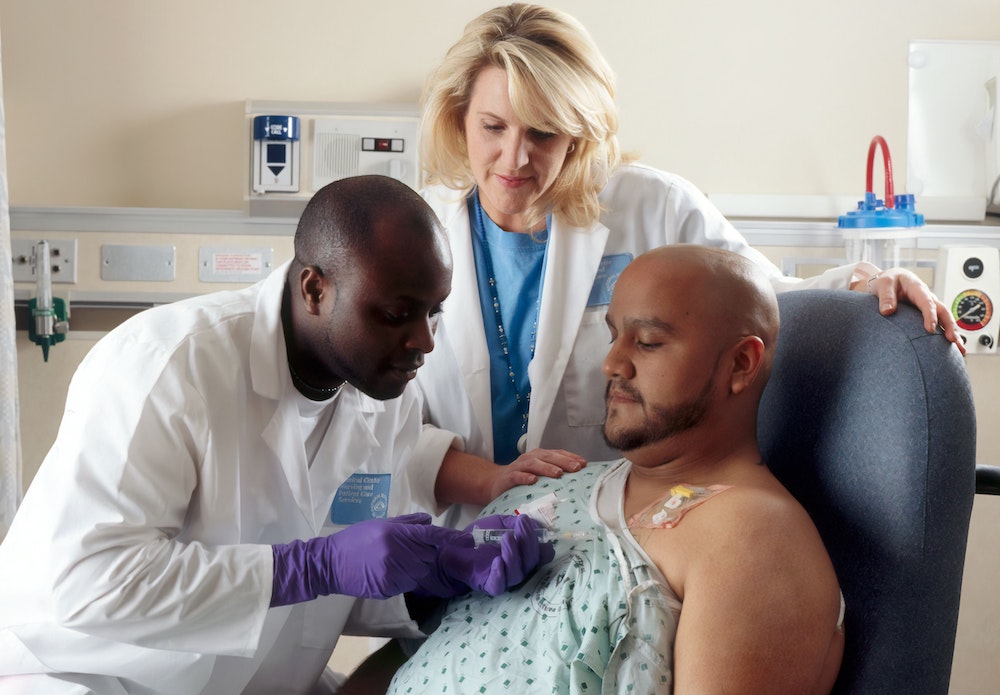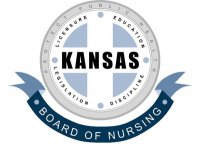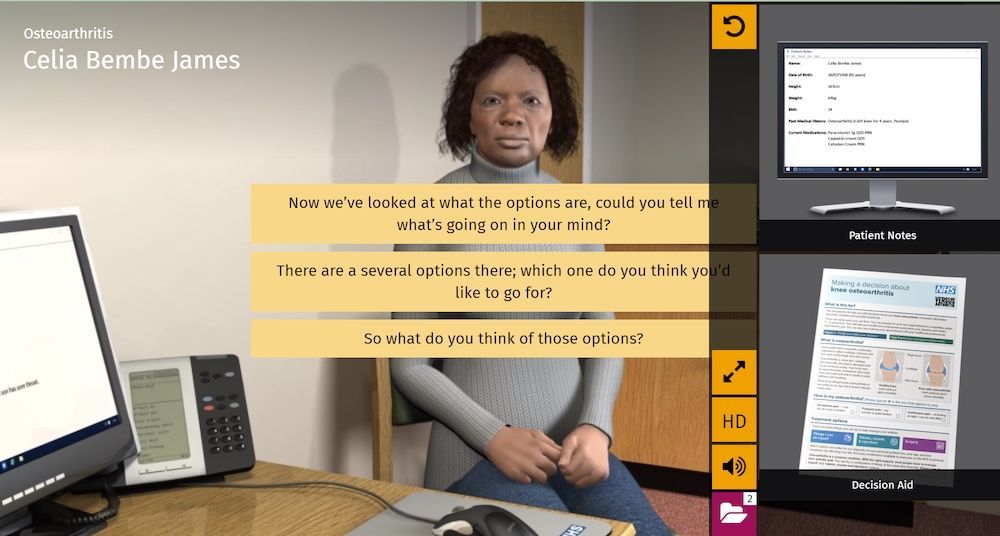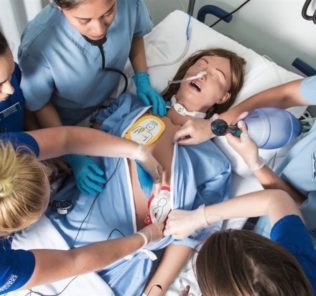More Free Nursing Simulation Scenarios
The Kansas State Board of Nursing has a free library of simulation scenarios designed by nursing faculty for nursing and allied health programs. Free scenarios currently for simulation in healthcare currently include:
- GI Bleed or “Blood & Guts”
- “It’s all in the Head” Meti-meningitis/seizure
- Femur Fracture with Pulmonary Embolism
- Ischemic Stroke with Increased ICP
- IV – IV Medication Review
- Head Injury Scenario – 2 Parts
- Head Injury / Heart Failure Scenario
- Code Pink Simulation
- Air Leak Syndrome With Infant
- Code Pink With Meconium Simulation
- Respiratory Therapy Code Pink Simulation
- Simulation of Pediatric Diabetic Patient
- Placenta Previa – Remediation
- Pre-scenario Worksheet and List of 14 Scenarios
- Skills Check-off Scenario
- Basic Medical / Surgical Nursing
- Intermediate / Complex – 2 Medical / Surgical Scenarios 2 Sessions Each
Be sure to consider submitting your scenario to help build their scenario library. Also, check out my previous article on where to get free simulation scenarios!
Sponsored Content:
Free nursing simulation scenarios offer learners and instructors guidance and insight into engaging clinical simulation experiences that expand education and training possibilities. Each healthcare simulation scenario is intended to provide an outline of a specific patient case experience, including a patient’s history, medical records, symptoms, profession, vital sign changes and more. This thorough description, depicted through simulation based learning (SBL), allows scenario participants to improve their performance over time while increasing patient safety. Many nursing simulation scenarios are also programmed into a clinical learning tool, such as a high-fidelity patient simulator like the Laerdal SimMan 3G, to increase the operational efficiency.
Overall, nursing simulation scenarios can include elements such as ways to determine a diagnosis, perform a test, recommend a treatment or assist in performing a procedure. Often, nursing scenarios are tailored to a needs assessment and the identified learning objectives. Utilizing a needs assessment helps ensure that nursing scenarios produce consistent outcomes, while boosting the strength and value of the experience across all settings.
The use of nursing simulation scenarios further helps to identify gaps in knowledge or skills that learners may experience, and instill them with confidence through education, training and practice. The risk-free environment which a nursing simulation scenario offers allows each learner to retain the information necessary to perform nursing skills and responsibilities at their own pace. Required skills which nursing simulation scenarios help to build can include basic assessments, critical-thinking situations and determining the need to perform more advanced interventions.
Free Nursing Simulation Scenarios
Sponsored Content:
KSBN Library of Nursing Simulation Scenarios: The Kansas State Board of Nursing offers a free library of nursing simulation scenarios. These scenarios have been developed by faculty at Kansas nursing schools, and are available for use by nursing and allied health programs. Each scenario includes case-specific information such as which discipline the scenario is within, the location of the scenario, expected simulation runtime and debriefing time, the author of the healthcare simulation, and more. Free scenarios currently for simulation in healthcare currently include:
- GI Bleed, or “Blood & Guts”
- “It’s all in the Head” — Meti-meningitis/seizure
- Femur Fracture with Pulmonary Embolism
- Ischemic Stroke with Increased ICP
- IV — IV Medication Review
- Head Injury Scenario (two parts)
- Head Injury / Heart Failure Scenario
- Code Pink Simulation
- Air Leak Syndrome With Infant
- Code Pink With Meconium Simulation
- Respiratory Therapy Code Pink Simulation
- Simulation of Pediatric Diabetic Patient
- Placenta Previa — Remediation
- Pre-scenario Worksheet and List of 14 Scenarios
- Skills Checkoff Scenario
- Basic Medical / Surgical Nursing
- Intermediate / Complex — 2 Medical / Surgical Scenarios (2 sessions each)
Medscape MedSim Nursing Scenarios: Medscape offers free MedSim Scenarios for varying patient medical conditions, including pediatric and behavioral health. These scenarios include patient medical records and the ability to conduct assessment interviews with virtual patients that can provide learning experiences for nursing students. To access these scenarios, participants first need to create an account. Then they will be able to review charts and complete the patient assessment component of a chosen scenario to ultimately develop a plan of care.
An example of a Medscape MedSim nursing scenario is the module “How Would You Manage This Patient With Asthma? Simulation for Appropriate Workup, Treatment, and Monitoring.” This lesson is intended for pulmonologists, allergists and clinical immunologists, primary care physicians, nurses and nurse practitioners. The goal of the activity is to provide learners who treat patients with asthma with the latest scientific data on treatment options, concepts of disease management and clinical recommendations, including guideline-based approaches to treatment selection and optimization for individualized patient care.
Upon completion of this activity, learners will be expected to demonstrate improved performance associated with ordering appropriate tests to assess asthma phenotypes.
They will also be able to tailor a guideline-based therapeutic plan to assist in managing the patient’s disease severity. Lastly, they should now be able to follow up with patients to monitor effectiveness of treatment plans and adjust as necessary.
Laerdal Complimentary Nursing Simulation Scenarios: Laerdal offers a number of complimentary nursing simulation scenarios that can be used alongside three of their company simulations: SimBaby, SimNewB and Nursing Anne. Nursing Anne scenarios provide both a case overview and the scenario itself. Scenarios include topics such as colostomy care, feeding by nasogastric tube, urinary catheterization and oxygen therapy.
For the oxygen therapy nursing simulation scenario, the case overview explains that the experience is intended for one to two nursing learners at a time, requiring 10 minutes for the simulation and 20 minutes for the debriefing. Learning objectives specific to this simulation scenario include that the learner be able to complete the following:
- Perform a focused respiratory assessment
- Recognize the need for increased oxygen administration
- Demonstrate correct techniques for oxygen administration
- Explain procedures to the patient using an appropriate communication framework
- Demonstrate appropriate evaluation of the patient outcome
When the nursing simulation has concluded, Laerdal recommends that a facilitator-led debriefing is completed to discuss all topics related to the learning objectives. The Event Log in the provided Session Viewer offers suggested debriefing questions. Central discussion points include questions relating to:
- Performance of a focused assessment of the respiratory system
- Management of oxygen therapy
- Communication with the patient
Alternatively, SimBaby scenarios represent circumstances where a baby may be in compensated shock due to dehydration or sepsis, where they are experiencing moderate viral croup or pulseless electrical activity due to drowning. SimNewB scenarios depict newborns in need of PPV, PPV and intubation, CPR and medication, or supplemental oxygen.
Within the SimNewB supplemental oxygen nursing scenario, a single participant is guided through a simulation immediately after delivery where a baby girl appears limp with shallow breathing, and no crying at initial assessment. This lesson is designed to help educate learners on how to perform initial assessment of a newborn and identify the need to perform neonatal resuscitation per local guidelines. This nursing scenario also enables learners to practice utilizing warming and drying of a newborn, assessing the efficacy of these actions, and recognizing persistent inadequate tissue oxygenation using both visual and diagnostic methods.
University of Washington Simulation Team Training Toolkit: The University of Washington’s Center for Healthy Sciences Interprofessional Education Research and Practice offers two nursing simulation scenario resources. The first, “Simulation Scenario Building Templates & Tools,” includes simulation scenario building templates and tools intended for educators involved in developing comprehensive and customized interprofessional simulations for health sciences students and trainees. These tools were developed by members of the UW Macy Grant Team with funding from Josiah Macy Jr. Foundation.
The second, “Simulation Scenario Library,” includes interprofessional simulation scenarios developed at the University of Washington and are available for free to download and use. The scenarios can be modified to meet your needs and objectives.
Canadian Alliance of Nurse Educators Using Simulation: CAN Sim provides simulation scenario topics online. Specifically the organization offers acute critical care nursing simulation scenarios. These scenarios include scenarios such as acute exacerbation of asthma in adults, brain attack, client with unmanaged pain, hypovolemic shock, multiple patient trauma, and more. For full access to scenarios, contact Marian Luctkar-Flude at mfl1@queensu.ca.
NLN Virtual Simulation Options for Undergraduate Nursing Students: The National League for Nursing offers simulation resources for undergraduate nursing students. In this spreadsheet, learners can find resource names, links to their respective resources, and learn about the type of activity and information they are providing. Many of the resources within the spreadsheet indicate how exactly learners can use the resource.
Nurse Key Pediatric Nursing Care Clinical Simulation Scenarios for Prelicensure Students: The following four pediatric-based clinical scenarios were created by two pediatric faculty members and a simulation-based expert at Villanova University, College of Nursing, who holds a certification as a Certified Healthcare Simulation Educator (CHSE).
At Villanova University, College of Nursing pediatric clinical learning experiences for undergraduate learners are augmented with these four formative simulation scenarios offered during the 7-week pediatric clinical experience, along with a summative clinical scenario conducted after the 7-week clinical practicum. These materials can be downloaded and students can complete the necessary preparation-for-learning activities before the simulation-based learning experiences (SBLEs).
TheSimTech Nursing Simulation Scenarios: TheSimTech provides a collection of donated scenarios for learners to use or modify. Scenarios include abdominal trauma from a motorcycle crash, bradycardia, difficult airway, sepsis, and more. If learners have any scenarios they would be willing to share with the simulation community, they are asked to forward them to AndyHowes@gmail.com.
Montgomery College Nursing Simulation Scenario Library: The Nursing SImulation Library at Montgomery College is a resource for nursing educators in all settings and made possible by the generosity of the Healthcare Initiative Foundation. Each library listing contains video (used either independently or with accompanying document(s) to enhance education using simulation in any setting) and accompanying documents (used as guides for educators to recreate content in areas relevant to practice).
University Health Network Virtual Interactive Case (VIC) System: The VIC System creates simulations of encounters with patients in clinics. VIC cases are clinical reasoning exercises with feedback. Their role is to provide a bridge between theory and seeing learners in clinic (or ER), providing learners with “deliberate practice” as a way of gaining clinical expertise. The strength of VIC is that it is optimized for rapidly creating a large number of cases, by using a patient template, and creating variations of cases with different differential diagnoses for the same presenting complaint.
Centennial College, Ryerson University, and George Brown College Virtual Healthcare Experience: This portal provides healthcare learners and professionals with an experiential learning opportunity for practising client care in a safe virtual environment. Here they can access a number of simulation experiences that will engage them in clinical decision-making.
USC Standard Patient: This project is a freeware Virtual Standardized Patient (VSP) community for medical learners, residents, continuing medical education and medical educators. VSPs are virtual human avatars that can be conversed with (through typing or speech), that talk back, tell a story and are coupled with a feedback system that allows learners to improve their performance. VSPs can tell their stories and can answer most common medical questions that would be asked in a clinic environment.
MedPro Group Sample Scenarios: MedPro Group offers a simulation scenario that focuses on medical-surgical nursing sepsis. Within this scenario, the learner is provided with scenario background, learning objectives, target participants, expected outcomes, facilitator notes, equipment and supplies, scenario setup instructions, steps, a debrief and resources.
Massachusetts Nursing Initiative Simulation Scenario Library: The Massachusetts Department of Higher Education (DHE) Nursing Initiative Simulation Scenario Library. The Nursing Initiative encourages the enhancement of learning opportunities for students and incumbent workers through the use of simulation technology.
All the scenarios available for download on this site were developed by academic/practice partnerships with grant funding provided by the Nursing Initiative. The scenarios on this site are available for download to registered users at no cost. Visitors are welcome to browse through these pages however registration is required to download or provide feedback on the scenarios.
Learn More About Nursing Simulation
Lance Baily, BA, EMT-B, is the Founder & CEO of HealthySimulation.com, which he started while serving as the Director of the Nevada System of Higher Education’s Clinical Simulation Center of Las Vegas back in 2010. Lance is also the Founder and acting Advisor to the Board of SimGHOSTS.org, the world’s only non-profit organization dedicated to supporting professionals operating healthcare simulation technologies. His co-edited Book: “Comprehensive Healthcare Simulation: Operations, Technology, and Innovative Practice” is cited as a key source for professional certification in the industry. Lance’s background also includes serving as a Simulation Technology Specialist for the LA Community College District, EMS fire fighting, Hollywood movie production, rescue diving, and global travel. He and his wife Abigail Baily, PhD live in Las Vegas, Nevada with their two amazing daughters.
Sponsored Content:





















